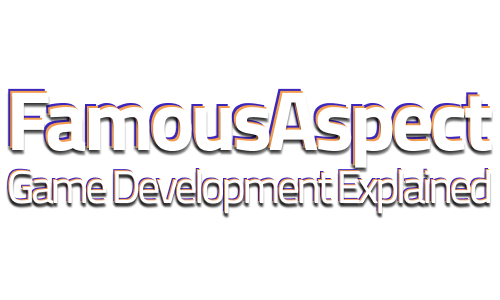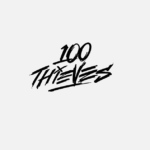Marvel Snap is an undisputed hit with gamers and game journalists, but one month into an all out marketing blitz, achieving cohort paybacks looks like a challenge based on data.ai revenue estimates.
Why It Matters: The team at Second Dinner is a collection of world-class CCG makers, having proven their bonafides with the blockbuster success of Hearthstone before striking out on their own with $30m in venture funding. After 4.5 years of development, they have delivered a fun, fast and satisfying CCG that, as a fellow game designer, I am hugely impressed and inspired by.
- The game employs a laid-back, player friendly and cosmetics-first monetization philosophy
- Second Dinner has given gamers and journalists everything they say they want in a F2P game
- They have been rewarded with fantastic ratings on the app stores and frequent, glowing coverage from the gaming press
- This team of world-class, mostly ex-Blizzard devs have given players everything they say they want
But with a $1.08 revenue per download after 30 days of WWL (according to data.ai estimates) the team has a challenging road ahead of it to achieve cohort paybacks.
Monetization Strategy: Marvel Snap’s monetization is extremely player friendly. It is a cosmetics first approach where no cards are locked behind gacha or paywall; however spending real money does help you access additional cards quicker:
- You cannot directly pay for power or open gacha packs as is standard for CCGs
- I characterize it as a “cosmetics first” monetization strategy
- All cards in the game are unlockable through either Season Pass progress or Collection Level progress
- Your Collection Level is a score that represents how much cosmetic upgrades you have unlocked
- You can gain everything you need to upgrade your cosmetic elements through play
- Or speed up Collection Level progress by a measured amount daily through spend
- There is a Season Pass containing a mixture of cosmetics, cosmetic upgrade currencies, card variants and new cards
- Some of these Season Pass rewards are free, some are locked behind a Premium or Premium+ purchase
- There’s no Gacha, no Evolution, no Leveling, no Stats. Upgrading heroes is all about upgrading their cosmetics, not their power
- There are no duplicates either. Once you’ve unlocked a hero, you can add them to any of your deck pre-sets
If I were to construct a spreadsheet to estimate how Second Dinner plans to achieve payback, the model would depend heavily on these three factors:
- Best-in-class long term retention on all platforms
- A large, passionate streaming community on Twitch/YouTube et al
- A shift from primarily paid to primarily organic, license & word-of-mouth driven users over time
This approach can work, and is the monetization strategy that drives some of the world’s biggest F2P successes. But, if you are not willing to use the type of Gacha driven monetization I have used to great effect in past CCGs, you cannot achieve Fortnite scale revenue without a Fortnite scale user base.
Marketing Analysis: I have been, and continue to be, bombarded with a wide ranging mix of Marvel Snap creative on every social network and gaming site I frequent since launch day. I simply cannot escape Marvel Snap! For an in-depth analysis, check out this excellent post by Matej Lancaric:
- Matej explains that CCG is a tough genre, and estimates a CPI range of $20-$40
- But, for a holistic look at eCPI for each download, we must also factor in what is likely a high licensing cost amortized across all the downloads.
- Given these factors, I’ll pull an estimated, all-in eCPI range of $8-$18 per user completely out of my bum
- Take this range with a giant shaker of salt! Just like the RPD estimates, only Second Dinner and it’s publisher Nuverse know the true and accurate KPIs
Can These Cohorts Pay Back? For comparison, let’s look at Goddess of Victory: Nikke released globally in early November and featuring the type of standard gacha based monetization from a mid-core collector.
With a blended RPD of $9.17 and growing according to data.ai estimates, this game is doing gangbusters. If I was running this game, I would be pushing for an incredibly aggressive marketing spend based off of this success in the first few weeks of November.
By contrast, Marvel Snap’s monetization strategy is dependent on long-term retention because, at present, there is not that much for an individual to spend on per event.
- This is a feature, not a bug
- This friendly approach drives the high user ratings and high volume of press coverage
- The primary purchase is a quasi-subscription like Premium or Premium+ Season Pass purchase.
- Once a player dips their toe into this purchase, they are likely to continue purchasing for at least a few seasons
- Snap is super friendly and rewarding to players, and wants players to make the game their #1 hobby for years
- Snap has grown its RPD from $0.67 right after launch to $1.08, according to data.ai estimates. No small feat!
- I would guess a 12+ month payback window on these initial cohorts with the current feature set
- But internal estimates likely predict shortening this window significantly with new features and live support
- Second Dinner is a team of experienced vets, and I expect they have a strong and exciting feature roadmap focused on inflecting mission critical KPIs
How Snap Wins: Here’s a believable scenario for how Snap becomes a $100m+/yr forever franchise without resorting to gacha or other high pressure monetization tactics:
- Snap retains its golden cohort users thanks to its fun, fast and satisfying gameplay and continued press coverage and deck building analysis
- Second Dinner launches many new features that increase depth of spend, boost retention and increase the size of the streaming community
- KPIs grow consistently until Snap is a scalable, cross-platform juggernaut
How Snap Loses: On the flip side, here’s a scenario for how the beautiful Snap experiment goes into maintenance, allowing Second Dinner to take another shot on goal with their remaining funds:
- Snap does not retain critical user volume before its tentpole updates launch
- These updates do not meaningfully inflect the KPIs
- Seeing no signs of profitable payback, the publisher pulls UA support
- Organic users do not monetize highly enough to be profitable relative to the license and operational costs
From the outside, both scenarios feel plausible at this point. The critical moments that determine Snap’s fate are likely to come in the next few months as we receive the first few major updates. We’ll be watching the game closely as well as the estimated metrics from data.ai to see if Second Dinner is on the path to the paradise of Valhalla or the underworld of Hel.
Ethan Levy is a 20 year veteran game designer, producer and monetization expert, having worked on over 80+ shipped games across every platform and business model. He is Deconstructor of Fun’s resident Crypto Kid, and is on the hunt for a Technical Director to help him build the next, great Web3 games studio. If this sounds like the right next adventure for you, reach out on LinkedIn.


